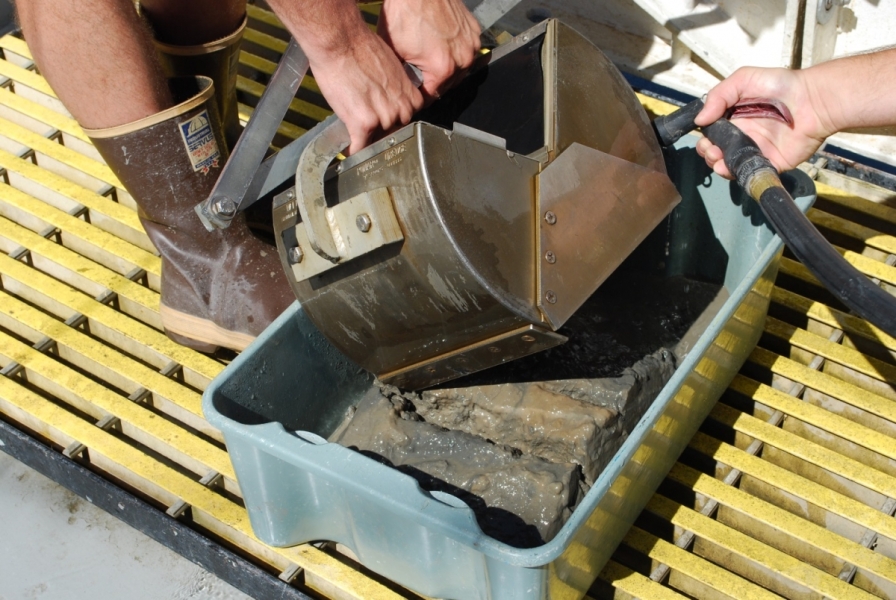Monitoring Great Lakes benthos from the R/V Lake Guardian 2013
-
1/23
In 2013, we received a grant to monitor Great Lakes Benthos aboard the EPA research vessel, the Lake Guardian. We joined a number of researchers from around the Great Lakes who monitor different parameters every year.
Download Image -
2/23
For this project, researchers spend about one month aboard the 180-foot R/V Lake Guardian. There are a number of rooms for bunking, a galley, and scientific labs on board. Research takes place 24 hours a day.
Download Image -
3/23
The first thing our researchers did was safety training. These survival suits are important if anything should happen to the boat. Safety first! Here are Susan Daniel, Josh Fisher, Alexander Karatayev, and Lyubov Burlakova.
Download Image -
4/23
Researchers collect water for multiple parameters, as well as using an instrument to measure physical parameters. This setup is called the rosette.
Download Image -
-
-
7/23
GLC researchers are monitoring the benthos, or the organisms living in the sediment at the bottom of the lake. Here is Josh collecting a ponar grab of benthos.
Download Image -

-
9/23
A ponar sample of sediment and benthic organisms. There are dreissenid mussels on the surface of the mud.
Download Image -
10/23
Next, the sample is put into the elutriator. We add water to the sample and rinse it through a mesh sleeve to remove most of the sediment while leaving the organisms behind to wash down into a bottle. Here, Sasha rinses the sediment out of a ponar sample.
Download Image -
11/23
Susie Daniel on the R/V Lake Guardian. Susie is the main researcher in charge of sample collection and processing for this grant for the GLC.
Download Image -
12/23
The GLC collaborates on this grant with Cornell University. They are in charge of collecting zooplankton and analyzing chlorophyll levels in the water. We help each other collect our samples.
Download Image -
13/23
Research takes place 24 hours every day, so the work is split into 12 hour shifts, with one during the day and one at night. Susie (right) is working the overnight shift.
Download Image -
-
15/23
When working on the back deck, researchers must wear life jackets, hard hats, and steel-toed boots. People working at the elutriator usually wear rain pants too. Susie and some researchers from Cornell are ready to sample!
Download Image -
16/23
To move between Lake Erie and Lake Ontario, the Lake Guardian goes through the Welland Canal in Ontario, Canada. Many shipping vessels move through this waterway.
Download Image -
-
-
19/23
After a month of collecting samples, we bring them back to the lab to process them.
Download Image -
20/23
Technicians or student workers pick through the sample to find the organisms so they can be counted and identified. Brianne Tulumello is picking a sample.
Download Image -
-
-
23/23
Susie Daniel is the chief taxonomist and identifies benthic organisms in the lab.
Download Image

